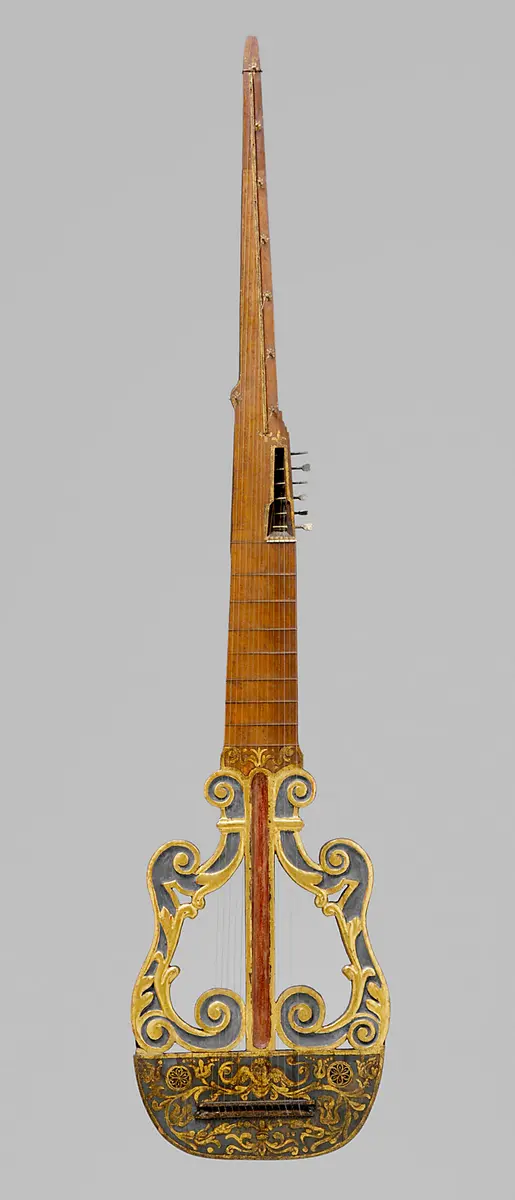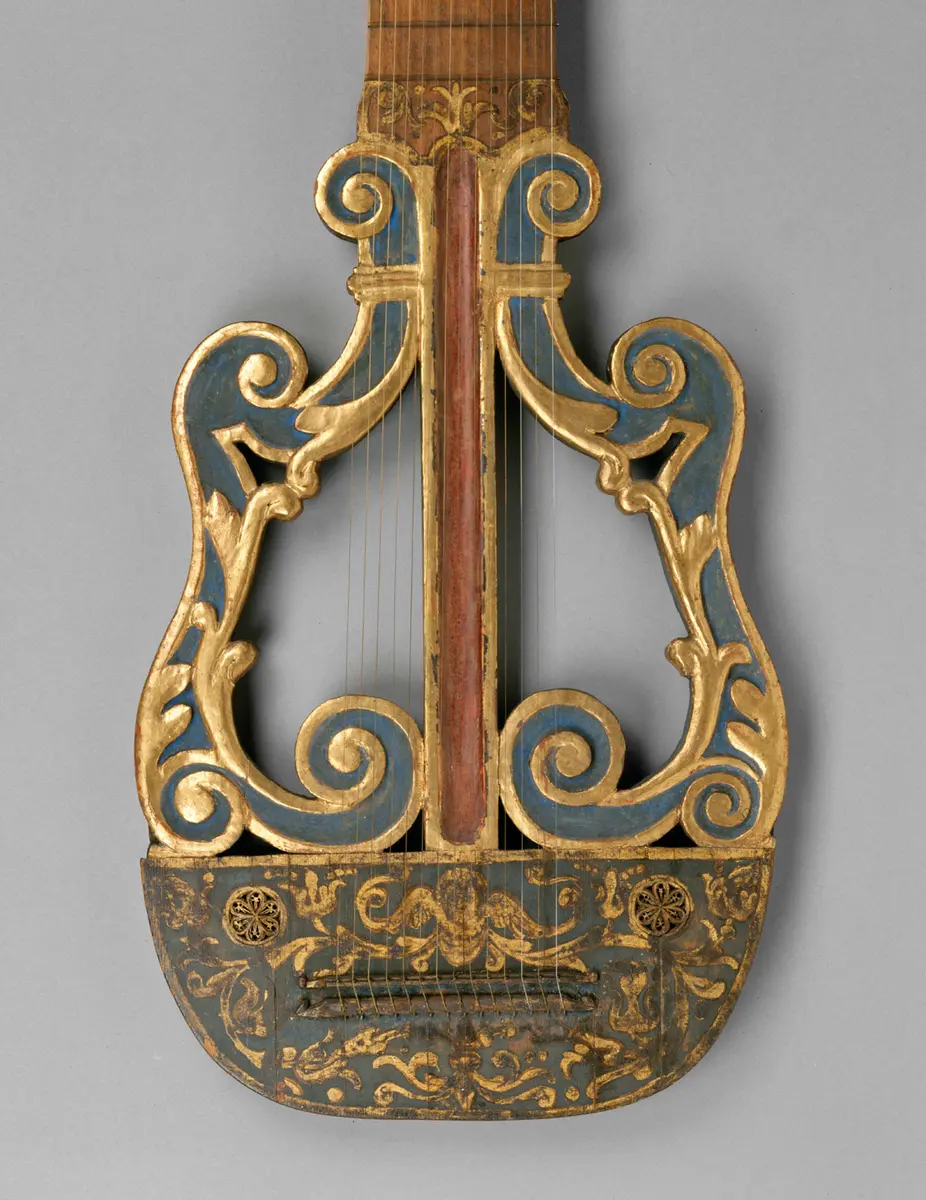Lyre-Cittern
Diese Cister, deren Korpus formale Anklänge an die antike Lyra zeigt, wird bereits in einem Ambraser Inventar des 17. Jahrhunderts erwähnt. Es dürfte sich um ein Theaterinstrument handeln, das auf der Bühne eingesetzt wurde. Typisch für die Spätrenaissance ist die Bestrebung, das antike Theater mit zeitgenössischen Mitteln wieder zu beleben. Der eigentliche Schallkörper ist sehr klein und umfasst nur den untersten, mit goldenen Ornamenten verzierten Teil des Instruments. Die darüber ansetzenden Korpusteile entsprechen formal den Jocharmen einer Leier. An Stelle des Querjochs sind die beiden Hälse angesetzt. Auch die Verwendung der Voluten und des Blattwerks ist als Zitat historischer Stilelemente anzusehen. Das Instrument ist mit Metallsaiten bezogen und besitzt Metallbünde. Ein Wirbelkasten trägt sechs Spielsaiten; ein separater Hals nimmt die acht Basssaiten auf, deren Saitenlänge sich kontinuierlich verlängert. (rh)
Literatur:Julius Schlosser: Die Sammlung alter Musikinstrumente. Beschreibendes Verzeichnis, Wien 1920.Rudolf Hopfner: Meisterwerke der Sammlung alter Musikinstrumente, Wien 2004.

